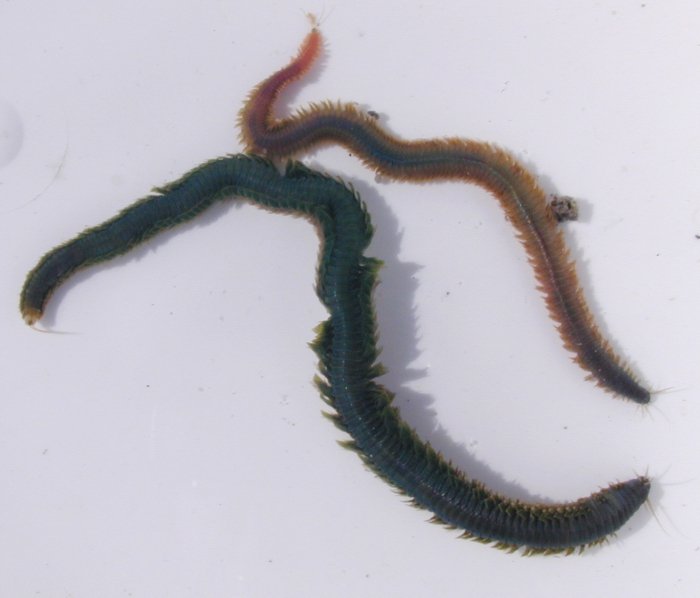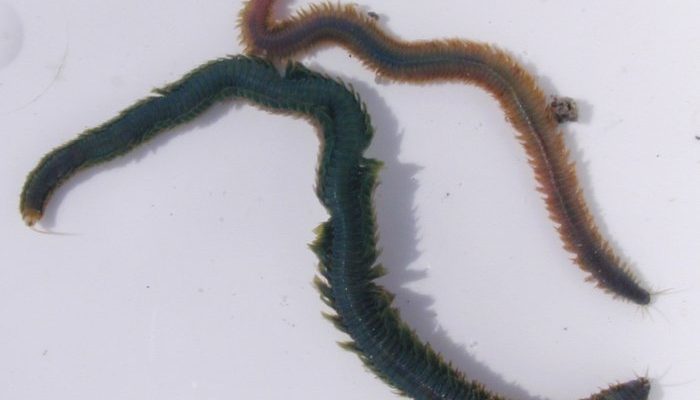
Now, you might be wondering why we should care about these little worms. Well, they’re not just fascinating; they also have important ecological benefits and, at times, drawbacks. Just like how a garden thrives with the right balance of plants and insects, coastal environments depend on the right balance of species like Nereis virens. Let’s dive in and explore this remarkable creature’s impact on our ecosystems.
What is Nereis Virens?
Nereis virens is a type of polychaete worm that typically inhabits sandy or muddy coastal areas. They can reach lengths of up to 10 inches and have a segmented body, giving them a unique appearance. When you look closely, you’ll see their bristle-like appendages, called parapodia, which help them move through their environment.
These worms play several roles in their habitat. For starters, they can burrow into the sediment of seabeds, which can be likened to how a gardener turns over soil to promote growth. In essence, Nereis virens aids in keeping the seafloor healthy and aerated. Plus, they serve as food for several fish species and birds, creating a crucial link in the food chain.
It’s fascinating that something as small as a worm can have such an outsized influence on its ecosystem. But just like any other species, their populations can fluctuate, creating both benefits and drawbacks.
The Ecological Benefits of Nereis Virens
When it comes to the positives, Nereis virens really shines in several important ways:
Nutrient Recycling
Firstly, one of the most significant benefits of Nereis virens is their role in nutrient recycling. As these worms feed on organic matter, they break it down into smaller particles. This process helps to enrich the sediment with nutrients, which can then be used by other marine plants and organisms. In a way, they act like nature’s recyclers, ensuring that nothing goes to waste.
Habitat Creation
Secondly, these worms also contribute to habitat creation. Their burrowing activities help to aerate and mix the sediments, which can encourage the growth of seagrasses and other essential species. Seagrass beds, in particular, are vital. They provide shelter and food for numerous marine creatures, from tiny crabs to larger fish.
Imagine a bustling underwater neighborhood where every resident relies on each other. Nereis virens is essentially the friendly neighbor who keeps everything in order, helping to ensure that everyone thrives.
Supporting Biodiversity
Another key benefit of Nereis virens is their contribution to overall biodiversity. By providing food and habitat for various marine life, they support a rich ecosystem. Healthy populations of Nereis virens can help maintain the balance of the marine food web.
If you look at a thriving ecosystem, it’s like a beautifully woven tapestry. Each thread plays a role, and when one is missing, the pattern can become disrupted. Nereis virens is one of those essential threads in the fabric of coastal ecosystems.
Drawbacks of Nereis Virens Populations
While Nereis virens offers numerous benefits, there are also some drawbacks to consider. Like many organisms, their presence in large numbers can sometimes lead to issues.
Overpopulation Effects
One of the main concerns is overpopulation. In certain environments, particularly those disturbed by pollution or habitat destruction, Nereis virens can thrive excessively. This can lead to a dominance of the species, which might disrupt the balance of the ecosystem.
Imagine a scenario where one plant species overgrows and crowds out others. Similarly, when Nereis virens populations surge, they can outcompete other species for resources. This can lead to a decline in biodiversity, which is never a good thing.
Impact on Sediment Quality
Another drawback could be the potential negative impact on sediment quality. If their burrowing activities are too vigorous, they might disrupt the habitat of other organisms living in the sediment. This disturbance can lead to the loss of small burrowing animals that are also crucial for maintaining a healthy ecosystem.
Let’s not forget that ecosystems thrive on balance. Too much of a good thing—like Nereis virens—can sometimes tip the scales the wrong way.
Human Influence and Management Challenges
Lastly, human activities can also complicate the situation. Pollution and habitat loss can lead to changes in Nereis virens populations, creating challenges for coastal management. As we interact more with marine environments, we have to think carefully about how to support healthy ecosystems.
It’s a reminder that we all play a role in nature. Just like how gardeners need to be mindful of their plants, we need to be aware of our impact on marine life and work to keep it balanced.
Conservation Efforts and Future Considerations
To keep the ecological benefits of Nereis virens while minimizing the drawbacks, conservation efforts are essential. Here are a few approaches that can help:
Protecting Habitats
First and foremost, protecting coastal habitats is vital. By preserving and restoring areas where Nereis virens thrive, we can help maintain healthy populations and support the ecosystems they serve. This includes efforts to reduce pollution runoff and manage coastal development responsibly.
Monitoring Populations
Secondly, monitoring Nereis virens populations can give scientists insights into ecosystem health. Regular assessments can help determine when populations are too high, allowing for timely interventions.
Investing in research and education about these worms is crucial for understanding their role in our oceans. When people understand the importance of these creatures, they’re more likely to support conservation efforts.
Community Engagement
Lastly, engaging the community in coastal conservation can make a big difference. Educational programs that highlight the role of Nereis virens and other marine species can foster a deeper appreciation for the ocean. This understanding can lead to more responsible behaviors that help protect marine life.
Nereis virens may be small, but their impact is significant. They contribute to nutrient recycling, habitat creation, and biodiversity, making them valuable players in coastal ecosystems. However, we also need to be cautious about overpopulation and the challenges posed by human activity.
Just like in any part of nature, balance is key. By understanding both the ecological benefits and drawbacks of Nereis virens populations, we can work together to protect marine environments. After all, a healthy ocean is vital not just for the creatures living in it but for us too. So next time you think about the ocean, remember these little worms and the big role they play in keeping our seas thriving.

